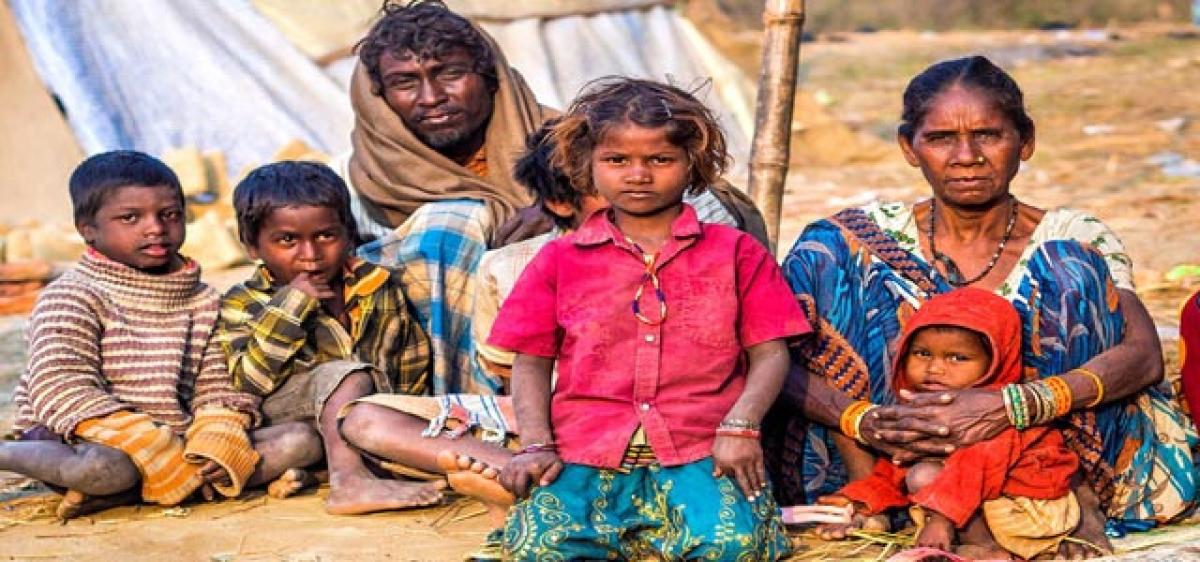Live
- Jupally Krishna Rao takes part in Alampur rallu
- Bharath Prasad files 3rd Nomination
- Baisakh Month: A Time of Auspicious Beginnings and Sacred Festivals
- Oust BJD govt for overall development, says Shah
- Unveiling the Hidden Gems: Surprising Health Benefits of Garlic Peels
- Overcoming Sleep Struggles: A Comprehensive Guide to a Restful Night
- RTC bus hit the auto
- MLA Kuchukula Rajesh Reddy participated in the Birappa festival
- DMHO starts awareness campaign on Malaria
- World Intellectual Property Day 2024: Date, History, Significance, and Everything You Need to Know
Just In

Even through the Indian economy has been growing steadily in the post-reform years, more and more people in rural India, where 833 million Indians (70 per cent) live, people are consuming fewer nutrients than are required to stay healthy, according to a National Nutrition Monitoring Bureau (NNMB) survey.
Even through the Indian economy has been growing steadily in the post-reform years, more and more people in rural India, where 833 million Indians (70 per cent) live, people are consuming fewer nutrients than are required to stay healthy, according to a National Nutrition Monitoring Bureau (NNMB) survey.
In rural population, cereals and millets form the bulk of the diet. In general, the rural population subsisting on an inadequate diet as the mean intake of nearly all the food groups was below the dietary recommended intake (DRI). DRI is the general term for a set of reference values used to plan and assess nutrient intakes of healthy people.
These values, which vary by age and gender, include Recommended Dietary Allowance (RDA): average daily level of intake sufficient to meet nutrient requirements of nearly all (97%-98%) healthy people. On an average, compared to 1975-1979, when the first survey was conducted, an average rural Indian now consumes 550 fewer calories — and 13 gm protein, 5 mg iron, 250 mg calcium and about 500 mg vitamin A lesser than they used to.
Children below the age of three are consuming, on an average, 80 ml of milk per day against the recommended intake of the 300 ml they require. The data explain, in part, why 35 per cent of rural men and women were found to be undernourished, and 42 per cent of children were underweight.
Why does rural India eat less protein or calcium when they are available aplenty? The answer is lack of purchasing power.
This is due to growing number of landless agriculture labourers. For instance, average landholding in Telangana is 1.12 hectares (2.8 acres) in 2010-11, as against all India average of 1.16 hectares. Increase in population has put more pressure that led to fragmentation of landholdings and small, marginal and who are once owners have become landless over the last 40 years.
However, the NNBU survey finds that the proportion of landless in rural India has grown from 30% to 40% and the proportion of people who are once owners and cultivation has gone down by almost half. Resulting in more and more rural people are not growing food for them but are compelled to buy the food grains at higher prices and even the PDS system also nor supported them to feed with sufficient cereals and pulses to the common rural India.
Thus the incidence of under nutrition has become more widespread despite higher quantum of increase in food grains production during the period. Though the Central and State governments have undertaken massive poverty alleviation prorgrammes on a large-scale for the overall socio-economic development of rural people, besides the programmes to mitigate the problem of under nutrition, they have not yielded results to address the problem of under nutrition in rural India.
The NNBS survey findings have adverse implications for Prime Minister Narendra Modi’s ‘Make-in-India and ‘Skill-India’ programmes for economic growth. India’s economy has been growing consistently since the early 1990s. The country has survived the recessions that started in US in 2008 and affected large parts of the world. What is not as well known is that over the same period, more and more people in rural India were eating less and less.
Yet, India does not take policy action for identifying this hunger, 70 years after Independence. In 2015, the NNMB the only source of longitudinal data on nutrition levels and food intake across 10 states of India was shut down. The shutdown may not reveal what we need to know, but it will make sure that we do not encounter such uncomfortable facts in future.
By Gudipati Rajendera Kumar

© 2024 Hyderabad Media House Limited/The Hans India. All rights reserved. Powered by hocalwire.com







